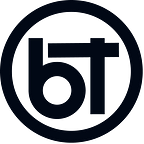Avoiding Backorder Blues: An Innovative Approach to Managing Inventory and Fulfilment
Achieving effective inventory control involves finding the right balance between minimizing the costs associated with holding excess inventory, and ensuring that enough inventory is available to meet customer demand.
While stockouts often result in lost sales and unhappy customers, there are scenarios where a customer is willing to wait for an order that cannot be immediately fulfilled. In cases where a large order is placed, it may be possible to ship the available in-stock items to customers who are willing to wait for the remainder of the order to be fulfilled.
Managing backorders
An inventory backorder occurs when a customer buys or orders a product that is currently out of stock. The same applies to you with Purchase Orders placed with suppliers, for example, when a product sells out unexpectedly due to high demand or all safety stock has been depleted.
While some customers may still opt to purchase products that are not readily available, backorders do not necessarily translate into sales. Customers may later decide to cancel their order, leaving the business with excess inventory that was purchased to meet the backorder demand.
Furthermore, if the business collects prepayment for the order before it is fulfilled, and there are delays, or the supplier is unable to fulfill the order, the business may have to reimburse the payment. This can be both time-consuming and expensive, resulting in customer dissatisfaction and negative word-of-mouth, which can harm the business’s reputation.
Monitoring your backorder rate is crucial when handling backorders. This metric indicates how many of your orders cannot be fulfilled at the time of purchase. A high backorder rate implies that customers will have to wait longer for their orders to be fulfilled. This can negatively impact their experience, satisfaction, and loyalty.
Blakthumb’s integration between Production and Inventory allows you to manage production timing more effectively, improving your management process and ensuring you meet your customers’ expectations. Our platform offers options such as setting PAR-levels so you can be alerted when stock is low, and expiry dates to help you achieve this goal.
When backorders become a tricky process to manage
Backordering occurs when orders cannot be fulfilled due to insufficient inventory or receiving orders that are larger than the available stock. In some cases, a sales order may include one or more items that are out of stock.
Managing a few backorders for single items may be straightforward, but handling a lot of backorders for different products can quickly become a logistical nightmare. Keeping track of all sales orders with backordered items, placing purchase orders for the products from various suppliers, and ensuring that the orders are fulfilled once the stock arrives can be tricky to manage.
If backorders are a regular occurrence, it’s essential to review and improve your inventory control procedures. A reliable inventory management system can help automate backorder management. With Blakthumb, we help you analyze historical ordering data to establish PAR levels for reordering, and we even automate the purchase order process. This reduces the burden of managing backorders to ensure orders are fulfilled efficiently.
So when it comes managing backorders, evaluate the timeframe for fulfilling them. A reliable inventory control system like Blakthumb can help you manage backorders efficiently, ensuring that customers are not left waiting for long and can help prevent inventory backorders from occurring in the first place.
